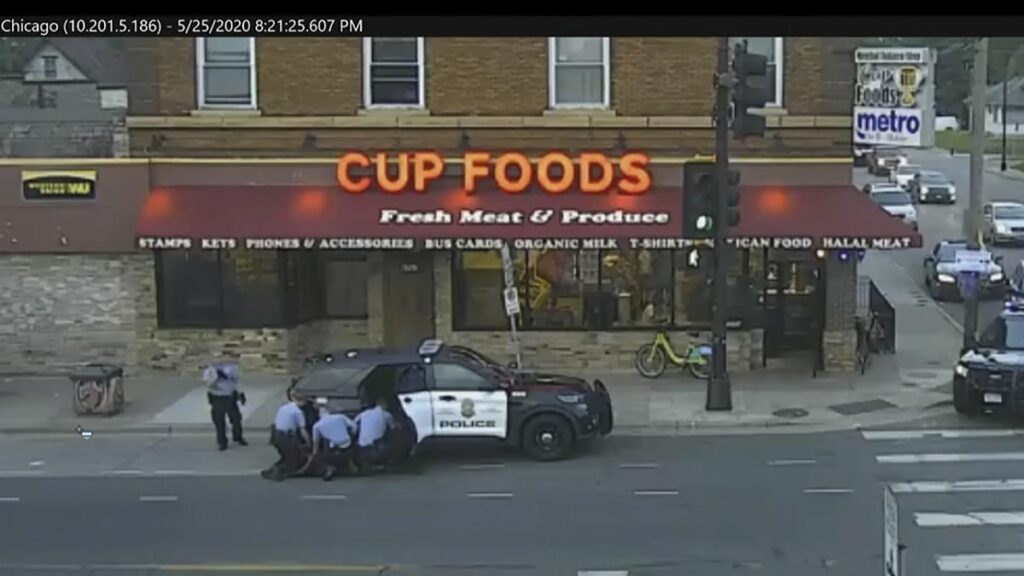
The foundation of the case against the former Minneapolis police officer charged with killing George Floyd is a mountain of video evidence, but presenting that to jurors isn’t as easy as pushing play.
Over and over, prosecutors have shown video from surveillance cameras, bystanders’ cellphones and police body and dash cameras, and have asked witnesses to annotate footage or photographs and narrate the action on screen.
Large screens or projectors are fixtures of modern courtrooms, alongside software similar to PowerPoint designed for courtroom presentation of videos, photos and other evidence. But the quality of that technology and attorneys’ use of it varies.
WHAT’S IN THE COURTROOM?
The courtroom being used for Derek Chauvin ‘s trial is the largest and only one in the Hennepin County courthouse equipped with the tools to present and annotate video and other visual evidence.
Jurors are able to see evidence on three monitors.
A touchscreen monitor is positioned at the witness stand. Prosecutors have been asking witnesses to circle themselves or point out details using a stylus.
Hennepin County Judge Peter Cahill has a monitor at his bench, and he’s able to control when a witness’ annotations are visible to the courtroom.
Prosecutors have played dozens of video clips from bystanders’ cellphones, the cameras Chauvin and other officers wore, and surveillance cameras on the street and inside the neighborhood store where Floyd was suspected of passing a counterfeit $20 bill.
They have used a picture-in-picture feature to play cellphone videos of Floyd and the officers beside an uninterrupted feed of the street from a surveillance camera, giving jurors a view from multiple perspectives and clarifying the context of the bystander videos.
The defense has yet to begin presenting its case but Chauvin’s attorney, Eric Nelson, has indicated he will also rely on video evidence to show his client is not guilty.
Cahill and the attorneys also use a system of headphones and microphones that allows them to speak privately and remain socially distanced, instead of approaching the judge’s bench.
IS SUCH COURTROOM TECHNOLOGY TYPICAL?
The pandemic has forced many courts to quickly embrace technology, and some hope those positive experiences will inspire more attorneys to use tech tools as they return to courtrooms.
But many attorneys don’t have the time and resources to prepare a presentation to the level of detail seen in the Chauvin case, said Jessica Silbey, a professor at the Boston University School of Law.
Michael Moore, the Beadle County State’s Attorney in eastern South Dakota, said cost is the top deterrent for many attorneys, followed by discomfort.
Moore said he frequently uses software to create timelines, display documents and other visual evidence in cases. He believes it’s easier for jurors to follow his arguments and it saves time at trial compared to old-school handouts of photos or documents.
But more often than not, Moore said, courtrooms are not “wired” for lawyers who embrace such tools. Moore brings his own flat screen monitor to some trials to ensure jurors have a good view.
It’s difficult to know how many courthouses in the U.S. can accommodate such technology.
Fred Lederer, director of the Center for Legal & Court Technology at William & Mary Law School, said decisions about purchasing the equipment — which has been around since the early 1990s — often involve judges and court administrators, local elected officials and IT staff, and can be “immensely complicated.”
WHY DO THESE TOOLS MATTER?
Prosecutors made no secret of their strategy to keep jurors’ focus on video evidence capturing Chauvin’s actions. During opening statements, prosecutors played the full video of the encounter and emphasized that the officer pressed his knee on Floyd’s neck for 9 minutes, 29 seconds.
Lawyers arguing a case involving critical video evidence cannot assume that everyone views it through the same lens. Silbey said. They have to focus jurors’ attention by slowing footage down, circling or highlighting an event, and narrating what is happening.
“Lawyers make a mistake if they assume people see what they see and that the video speaks for itself,” Silbey said.
People understand and remember information more easily when it’s accompanied by a visual aid, Lederer said.
“Presenting information visually enables judges and jurors to better understand what’s happening,” he said. “And from a lawyer’s standpoint, if you have good evidence, you can persuade better.”
Attorneys have to walk a rigid line, though. One memorable misstep triggered a New Jersey Supreme Court review and led justices to overturn a bank robbery conviction in January.
The prosecutor improperly used an image of Jack Nicholson in “The Shining” in a slide displayed during her closing argument, the court found.
“Visual aids such as PowerPoint presentations must adhere to the same standards as counsels’ spoken words,” the opinion read.
CHICAGO (AP) — By KATHLEEN FOODY
Inside Telecom provides you with an extensive list of content covering all aspects of the tech industry. Keep an eye on our Community section to stay informed and up-to-date with our daily articles.